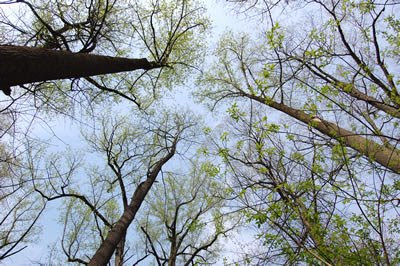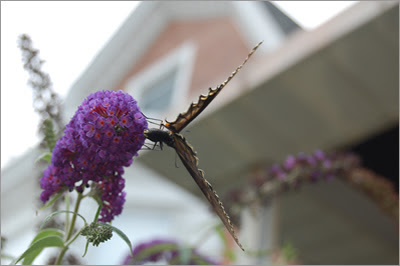 I am going to visit my mother today, and thinking of her led me to think of this piece, which I wrote last year for another weblog.
I am going to visit my mother today, and thinking of her led me to think of this piece, which I wrote last year for another weblog.The first book to excite my imagination in a lasting and profound way was Kenneth Graham’s
The Wind in the Willows. I was three or four when it first came into my hands, too young to read it myself, and too young to have it read to me, its language and themes pitched beyond my understanding. But I still loved having it in my possession. All of my other books were thin, with bright colorful pictures and simple declarative sentences.
The Wind in the Willows was thick and heavy. The sentences were dense, the print tiny. I even loved the smell of it – dusty, like the attic of my grandmother’s farmhouse, which my mother and I had moved to when I was two years old. That meant to my child’s imagination that it was old, and like the artifacts I would explore when I snuck into the attic, mysterious and of a nature I couldn’t completely comprehend.
What intrigued me most about the book were the
Arthur Rackham illustrations. Unlike the smiling, uncomplicated animals in my other books, these creatures were dark, even morose, with furrowed brows and hunched shoulders. Even when they were smiling, or engaged in some enjoyable activity, such as unpacking a picnic basket, there was a wistfulness in their expressions. In the background, gnarled trees appeared to be coming to life, and to lean in close to each other in secret conversation. I didn’t know the word subtext then, but I understood that under the surface lurked hidden meaning.
My mother read
The Wind in the Willows to me over a succession of summer nights when I was five or six. This was before I went to school, so my scope and understanding of the world was gathered from my explorations of the farm – adventures that took me along the deep and winding banks of the Davidsburg Run which ran the length of the property, or to secret hideaways in hay mows, or the woods that crowded the margins of fields. The landscapes encountered by the characters in the book were similar in their strangeness and in the wonder they inspired, and soon the two worlds – the fictional one of the story and the real one of the farm – began to merge in my imagination, informing each other.
I felt that I knew the characters long before my mother began to read the book to me. For a year or two I had been turning through the pages and studying the illustrations. The well-fed, twinkley-eyed Rat reminded me of my Uncle Ed, good natured and mischievous. Toad looked like an old rascal from the neighborhood who used to buy eggs from my grandmother, loud, braggadocios, and not to be entirely trusted. And Mole, with his dark and foreign looks, and disheveled, out-of-place clothing, reminded me of myself – accepted and loved by the others, but always a little at odds with his surroundings.
My mother, a schoolteacher, read wonderfully out loud. She read slowly and deliberately, loving the language of the book. Early on in the first chapter, Mole decides to abandon his spring-cleaning in favor of adventure, and scrambles from his underground home.
So he scraped and scratched and scrabbled and scrooged, and then he scrooged again and scrabbled and scratched and scraped, working busily with his little paws and muttering to himself, “Up we go! Up we go!” till at last pop! His snout came out into the sunlight, and he found himself rolling in the grass of a great meadow.
“I just love those words,” my mother said. “Listen to them,” and she read the passage again.
At twelve chapters and 190 pages,
The Wind in the Willows was not to be rushed, and in my memory the reading of it, every night before bed, required the better part of that summer’s evenings. In my recollection, the main plot of the novel, which involves the adventures of the nefarious Toad, does not assert itself until well along in the book. The first chapters take their time establishing setting and letting the reader get to know the characters. Even after the plot takes off, there are wonderful moments of stillness where the main narrative is, for a time, suspended, and the reader feels as though he can recline with the characters and wonder at the world around them and him.
In the years that followed, my mother read
The Wind in the Willows to me again once or twice, and then I was old enough to read it to myself. When I left the farm to go to college in Philadelphia, I took the book with me, and read it in its entirety for a final time when I was eighteen or nineteen. I thought that I would discover new meanings that had eluded me when I was younger. I was right. There was, for example, in rhetorical asides during the Toad adventures, a subversive subtext to the goings on, a critique of modern culture and institutional authority that appealed to my young man’s sensibilities.
In the twenty plus years since then, I have picked the book up from time to time to read a passage or even a whole chapter. But I have not read it from beginning to end. This year I will read it again from cover to cover.

 I have no idea what BOWERMANSERIES means, but I am glad to finally get some fresh running shoes.
I have no idea what BOWERMANSERIES means, but I am glad to finally get some fresh running shoes.








































